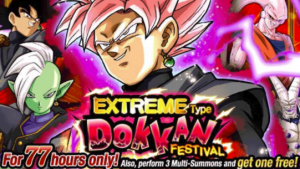Understanding Energy Systems
Energy seems to be hated by designers and players alike, so why does it endure as the hallmark of casual F2P games? The fact is that whilst it’s a crude mechanic, it’s also an efficient one, delivering several functions in one easily implementable feature.
This isn’t a defence of energy systems – I’ll follow up with a post on ways of replacing them – but without something fulfilling these roles then it’s unlikely you’ll make a very good game. I’ll talk about energy and timers fairly interchangeably here as they are both pacing systems that function remarkably similarly.
The four main reasons that mobile designers use energy systems are:
- Habituation
- Content pacing
- Monetization
- Strategic choices
Habituation
The primary reason that designers use energy systems is to encourage players to play as long and as frequently as they would like. The amount of energy gives an easy way to fix the length of the play session, whilst the energy refill rate determines the play frequency. Energy systems do this by providing the player with closure – the feeling that they have done everything they need to in a game, and that when they return there will be new, fun stuff to do.

This is why crop and resource production timers work so well. Players coming back to the game harvest all the crops that have grown whilst they are away – a hugely positive experience. Then they can use the crops to complete deals, craft things and improve their farm. Finally they plant their crops so ready for their next session. As they leave the game there is nothing more for them to do in their farm, so it feels like a natural point to stop playing; but they also know that when they return they can get the satisfaction of harvesting their crops again.
Designers need to be able to control session length and frequency because it allows them to integrate their game into their players’ daily routine. Any activity that becomes part of your daily routine is likely to be something that you keep doing a lot longer than you otherwise might, and long term retention is highly correlated to lifetime value.
Think of the game as chocolate. If you had unlimited chocolate (and limited willpower) you might binge on it to the point you were sick of it. At this point you wouldn’t want to eat chocolate again for a while. Imagine if you got a small piece of chocolate every afternoon with your coffee break though. Now the chocolate enhances your coffee break, but at the same time, you never have enough in one go to get sick of it. Instead you look forward to the chocolate enhanced coffee break, and would miss it if it was taken away from you. As with chocolate, so goes gaming.
Content pacing
The second main reason that designers use energy systems is to pace their content, and to ensure that players consume content at roughly the same rate. Once players have run out of new content to experience, they usually have little interest in a game. It is vital therefore, to ensure that players are not consuming content faster than you can produce it.
Energy systems are crucial to minimising inequality in game economies; they ensure that players all consume content at roughly the same rate
PvP games often have an advantage here because their players effectively produce content for each other to consume. In Clash of Clans, each player’s layout of their base is unique and interesting for other players to attack. But Clash of Clans still needs to bring out new units, upgrade levels and features on a regular basis to keep their most engaged players.
Energy systems also help to reduce the “distribution of wealth” in games that exists between highly engaged and less engaged users. By capping the rate that the most engaged players can play, they cannot get too far ahead of the less engaged players. This is important for balancing, as a game should remain interesting for both types of players, and setting a progression rate that is interesting for the slowest players and yet doesn’t allow the fastest players to run out of content can otherwise be a challenge.
Monetization
Making money is the third reason that designers use energy systems. In casual games energy might typically represent a third of bookings. This is not insignificant, but there are better ways to make money out of games, and monetization alone is a poor reason to go with an energy system. Energy doesn’t typically make for a very exciting or satisfying purchase, as it gives players something that they could get if they waited a bit longer. Most mobile designers realise this and despite the perception of energy systems as a cynical way to extort players, it is rare to see them if they are not needed for habituation and content pacing as well.
Strategic choices
In some games energy systems also provide the player with a strategic choice that they need to make. This comes from having a limited number of energy points to spend each session, and a greater number of possible actions. Players must decide what to spend their energy on, and because of this they usually need to set themselves a longer term goal that they are working towards over several sessions.
For example, in Clash of Clans, because I can only upgrade 2 or 3 buildings at a time, and each one might take anywhere from a few minutes to a few days, I need to work out what I prioritise. Do I upgrade my resource generating buildings first to facilitate further upgrades, my storage space allowing me to raid more, or my defensive buildings to protect what I’ve got? In prioritising my current session, I also create a mid term plan for my future sessions as well, which builds off this. In games where the energy system doesn’t allow the player any real choice in what they do, the system typically feels even more arbitrary and restrictive.
Conclusion
The reason that F2P designers use energy systems is not because they hate players, it’s because energy systems are efficient mechanics to encourage specific play patterns, pace content, monetize a game and provide a player with strategic choices. Designers should be wary of releasing any game without features that cover all these bases one way or another.






